| Description | | The most common cause of breast size is familial factors. In addition, breast enlargement is observed due to weight gain, hormonal disorders, pregnancy, breastfeeding and various breast diseases.
Is breast size an aesthetic problem?
Breast size is a health problem rather than an aesthetic problem. Large breasts put a considerable strain on the neck and back. As a result, patients develop treatment-resistant shoulder and back pain, flattening and deformity in the neck vertebrae. Most patients suffer from shoulder and back pain for years, take physical therapy and have to use a lot of drugs.
When people with large breasts use a bra, collapses and deformities occur on the shoulders, especially where the bra strap passes.
These people have rashes, fungal infections and bad odors that cause serious discomfort, especially in summer, under the breasts and between the nipples.
The size of the breasts causes serious problems in the social life of people, especially in adolescence and young girls.
Women with large breasts have difficulty in finding suitable clothes, have limited arm movements, and even have respiratory distress while lying on their backs and say that they feel as if they are suffocating.
What technique is breast reduction surgery performed with?
In breast reduction surgery, an appropriate amount of breast tissue is left for the person's body and excess breast tissues are removed. The drooping breasts are placed where they should be on the body, ensuring uprightness and recovery.
How many hours does breast reduction surgery take?
Breast reduction surgeries take 2-4 hours depending on the size of the breast.
How many days do I need to stay in the hospital after breast reduction surgery?
After breast reduction surgery, we can usually discharge the patient on the same day. If patients experience discomfort such as nausea, vomiting, dizziness, swelling and pain due to anesthesia, we consider it appropriate to follow these complaints in the hospital until they resolve.
How many days does recovery take after breast reduction surgery?
After breast reduction surgeries, the breasts heal in about 10 days.
When can one return to social and business life after breast reduction surgery?
After breast reduction surgery, people can return to their normal social lives in about 1 week. We recommend that they start heavy sports activities after about 1 month. If they have a job where they do not exert excessive physical effort, they can return to business life after 1 week. We recommend patients who have a job that requires physical activity to wait 2-3 weeks. | | After the surgery, patients can usually go home on the same day or after staying in the hospital for 1 night at the latest. In the first two days, there may be swelling, bruising and blood leakage from the nose. In the first days, patients may experience difficulty in breathing. Patients can continue their normal life after 2 days. The plaster and sutures are removed on the sixth day. After the plaster is removed, the patient can return to work. If bruises remain, they can be hidden with the help of concealer makeup. After about 3 weeks, the swelling goes down to a great extent and the patient's surgical appearance disappears. Patients should not do sports where they can get hit on their face for 3 weeks after surgery.
If one or more of the following structural problems are present, you may be a good candidate for rhinoplasty.
- Short nose
- Long nose
- Arched nose
- Low tip nose
- Broad nose
- Wide nose wings
- Excessive protrusion of the tip of the nose forward
- Nose tip asymmetries
- High transition point between forehead and nose
- The angle between the upper lip and the nose is too narrow
- The part between the two nostrils called columella in terminology is inside or drooping
- Big nose
- Small nose
| | |
| Content | Strabotomy
In cases that do not improve with glasses and exercise programs, surgery is applied to patients with congenital strabismus. With this treatment, it is done by increasing the strength of some of the 6 muscles in our eyes, by reducing some of them or by changing the effect points of some of them. Although early treatment is preferred in strabismus, treatment is possible in adulthood as well.
The operation is preferably performed under general anesthesia. The eye is closed after the operation. On the 1st day after the operation, the eye is opened and dressed. Afterward, the eye is not closed, there is no pain, only a slight stinging sensation may be felt in the patient. Patients can return to their daily lives 6-7 days after the surgery. Redness in the eyes lasts about 3-4 weeks, decreases with the use of drops.
Surgical intervention
Strabismus surgeries can be performed under general anesthesia in children and local or general anesthesia in adults.
How long does strabismus surgery take?
Although the duration of the operation varies according to the number of muscles involved, it takes an average of 1 hour.
The recovery process after strabismus surgery
Patients can return to their daily lives 6-7 days after the surgery. Redness in the eyes lasts about 3-4 weeks, decreases with the use of drops.
Is strabismus surgery risky?
As with any surgical procedure, strabismus surgery also has risks. Experienced surgeons reduce this risk considerably. | Breast reduction surgery is an operation performed to bring the breasts that are larger than the person's body to normal sizes. |
What is neural therapy?
Neural therapy is a regulation treatment performed by administering local anesthetics to certain parts of the body.
What is the neural therapy mechanism of action?
Neural therapy application is based on the regulation of our spontaneous (autonomous) nervous system. The drug used is not cortisone. It is one of the drugs called local anesthetics, which dentists also use to numb the teeth. These drugs are used by diluting them with liquids called physiological saline.
Who is neural therapy applied to?
Neural therapy can be applied to patients of all ages. Diseases such as blood pressure, diabetes, heart disease do not prevent treatment. Care should be taken in deep injections in patients who only use blood thinners.
What ailments is neural therapy good for?
- - Headaches
- - Regional Musculoskeletal Pain
- - Fibromyalgia Syndrome
- - Chronic Pelvic Pain
- - Waist-Neck-Back Pain And Hernias
- - Spinal Calcifications
- - Chronic İnflammations
- - Carpal Tunnel Syndrome
- - Chronic Pain İn The Elbows
- - Knee And Shoulder Pain
- - Tendinitis
- - Sports İnjuries
are the main ailments that can benefit from the application.
Who is neural therapy not applied to?
Neural therapy is not applied in patients with known local anesthetic allergies, cancer patients and pregnant women.
Is neural therapy application painful?
The most commonly used technique for neural therapy is intradermal and subcutaneous applications with mesotherapy needles. Slight pain may be felt during the application, but since the drug given is a local anesthetic, the pain disappears immediately. Persistent and long-term unbearable pain does not occur.
How many sessions of neural therapy are done?
Although it varies according to the patient, treatment is started once or twice a week in the beginning. Follow-up applications are usually done once a week. It is necessary to put at least 48-72 hours between sessions. The total session is related to the patient’s condition. Usually, 6 sessions are sufficient.
Doctor’s Note:
Neural therapy, which has a wide area of use and does not have any serious side effects, is a safe form of treatment for the mentioned diseases that can be answered in a short time. | Aesthetic nose surgery (rhinoplasty) or nose reshaping surgery is the most commonly applied plastic surgery. With aesthetic nose surgery, it is possible to reduce or enlarge your nose, change the shape of the tip or bridge of the nose, narrow the width of your nostrils or change the angle between your nose and upper lip. At the same time, if you have a congenital or injury-related deformity, it can be corrected or some breathing problems can be eliminated. |
Breast Health Package for Women Over 40
Our Breast Health Center, which is a part of Yaşam Hospital Oncology Center, offers all the possibilities of technology to provide the best care to every woman.
What is Mammography?
Mammography is the low-dose X-ray imaging of the breast tissue to look for early signs of breast cancer before symptoms develop. It can also be used for due diligence when a new symptom (lump or focal pain) develops in the breast tissue.
When viewed on a mammogram, breast tissue appears white and opaque (nebula), while fatty tissue appears darker and translucent.
When Should a Mammogram Be Done?
Annual screening mammograms are recommended for all women from the age of 40. Women who do not have any breast-related signs or symptoms are also screened. If an abnormality is present or patients have a new symptom (a lump or focal pain), additional evaluation may be required. Further examination will reveal what these suspected abnormalities are.
What Percent of Women Who Have Had Mammography Have Risky Situations?
Potential abnormalities are found in 6 to 8 percent of women who get mammograms. This group undergoes different additional evaluations, which may include breast physical examination, diagnostic mammography, breast ultrasound or needle biopsy.After these additional evaluations are completed, it becomes clear what the abnormalities found on the mammogram are.
What Does an Abnormality Look Like on a Mammogram?
The possible abnormality on a mammogram may be called a nodule, mass, lump, density or deterioration:
A mass (lump) with a smooth, well-defined border is usually benign.
Ultrasound is necessary to see and identify the inside of a mass. If the mass contains fluid, it is called a cyst.
A mass (lump) with irregular borders or a starburst appearance may be cancerous and a biopsy is usually recommended.
Microcalcifications (small calcium deposits) are another type of abnormality. They can be classified as benign, suspicious, or uncertain. Most microcalcifications are benign. Depending on how the microcalcifications appear in additional studies (magnification views), a biopsy may be recommended.
What is the Accuracy Rate of Mammography?
Diagnoses made by mammography are between 85 percent and 90 percent accurate. Mammograms can detect breast abnormalities before they are large enough to be felt. However, a palpable mass may not be seen on a mammogram. Any abnormality you feel while examining your breasts should be evaluated by your doctor.
What Should Be Considered Before Mammography?
You can follow your normal routine before the mammogram. You can take your medications and maintain your eating and drinking patterns. If you are breastfeeding, pregnant or think you may be pregnant, you should tell your doctor as your mammogram may need to be postponed.
What Should I Pay Attention to When Coming to My Mammography Appointment?
The technician will ask you to remove one breast from your bib at a time and place it on the chest support plate. The image of the breast is taken by clamping it between two plates. In the meantime, pressure is applied to the breast, preventing the breast from moving. This pressure spreads the breast tissue, allowing the radiologist to see the tissue better. Also, the least amount of radiation is used when the breast is compressed as finely as possible.
You may feel some discomfort during 3-5 seconds of pressure. If you cannot tolerate the pressure, please let the technician know. Pressure can be more bothersome at some times in a woman’s menstrual cycle. To minimize discomfort, we recommend scheduling your appointment seven to 10 days after the start of your period.
How is a Mammogram Taken?
The technician will ask you to remove one breast from your bib at a time and place it on the chest support plate. The image of the breast is taken by clamping it between two plates. In the meantime, pressure is applied to the breast, preventing the breast from moving. This pressure spreads the breast tissue, allowing the radiologist to see the tissue better. Also, the least amount of radiation is used when the breast is compressed as finely as possible.
You may feel some discomfort during 3-5 seconds of pressure. If you cannot tolerate the pressure, please let the technician know. Pressure can be more bothersome at some times in a woman’s menstrual cycle. To minimize discomfort, we recommend scheduling your appointment seven to 10 days after the start of your period.
How Does the Process Proceed After Mammography?
There may be temporary skin discoloration and/or mild pain in the chest due to compression. Most women will be able to resume their normal activities soon after their mammogram. Your results will be available within a few days after the test. After getting the results, your doctor will explain everything to you.
How Often Should You Have a Mammogram?
Regular mammograms every year, starting at the age of 40, will enable you to recognize potential risks early.
What Does the Breast Health Package Consist of?
Breast health package consists of General Surgery Examination and Mammography |
| WOMEN UNDER 40 LARGE SCREENING PACKAGE |
| LABORATORY ANALYSIS
|
| Glucose |
To determine whether or not your blood glucose level is within normal ranges; to screen for, diagnose, and monitor diabetes, and to monitor for the presence of hypoglycaemia (low blood glucose)
and hyperglycaemia (high blood glucose) |
| HbA1c |
To monitor average blood glucose levels over a 3 month period. Used to help diagnose and monitor people
with diabetes |
| Urea (Bun) |
To measure how much waste product you have in your blood. It is used to determine how well your kidneys
are working |
| Creatinine |
To assess kidney functions |
| Uric Acid
|
To diagnose kidney disorder,diagnose and monitor people with gout, monitor kidney function |
| Complete Urinalysis Test
|
To look for metabolic and/or kidney disorders and for urinary tract infections |
| Total Cholesterol
|
To look for metabolic and/or kidney disorders and for urinary tract infections |
| LDL Cholesterol
|
| HDL Cholesterol
|
| Triglycerides
|
| AST (SGOT)
|
To diagnose liver, bile duct and heart diseases. |
| ALT (SGPT)
|
| GGT
|
To screen for liver disease or alcohol abuse; and to help your doctor tell whether a raised concentration
of alkaline phosphatase (ALP) in the bloodstream is due to liver or bone disease |
| ALP
|
To screen for or monitor treatment for liver or bone disorder |
| Sodium
|
To investigate causes of dehydration, oedema, problems with blood pressure, or non-specific symptoms |
| Potassium
|
To help diagnose and determine the cause of an electrolyte imbalance; to monitor treatment for illnesses that
can cause abnormal potassium levels in the body |
| Chloride
|
To determine if there is a problem with your body’s acid-alkali (pH) balance and to monitor treatment |
| Calcium
|
To scan, diagnose, and monitor a range of conditions relating to the bones, heart, nerves, kidneys, and teeth |
| Phosphate
|
To help in the diagnosis of conditions known to cause abnormally high or low levels |
| Amylase
|
To diagnose pancreatitis or other pancreatic diseases |
| Lipase
|
To diagnose and monitor pancreatitis or other pancreatic disease |
| Magnesium
|
To diagnose and monitor pancreatitis or other pancreatic disease |
| C-Reactive Protein (CRP)
|
To identify the presence of inflammation, to determine its severity, and to monitor response to treatment. |
| 25 Hydroxy Vitamin D
|
To investigate a problem related to bone metabolism or parathyroid function, possible vitamin D deficiency,
malabsorption, before commencing specific bone treatment and to monitor some patients taking vitamin D. |
| Blood Count Haemogram
|
Haemogram serves as broad screening panel that checks for the presence of any diseases and infections in the
body |
| Blood Count Haemogram
|
Haemogram serves as broad screening panel that checks for the presence of any diseases and infections in the
body |
| Erythrocyte Sedimentation Rate
(ESR) |
To detect and monitor the activity of inflammation as an aid in the diagnosis of the underlying cause |
| Ferritine
|
To help assess the levels of iron stored in your body |
| Ferritine
|
To help assess the levels of iron stored in your body |
|
Vitamin B12 |
To help diagnose the cause of anaemia or neuropathy (nerve damage), to evaluate nutritional status in some
patients, to monitor effectiveness of treatment of B12 or folate deficiency |
|
Free T3 |
To help diagnose hyperthyroidism and monitor it's treatment |
|
Free T4 |
To diagnose hypothyroidism or hyperthyroidism in adults and to monitor response to treatment |
|
TSH |
To screen for and diagnose thyroid disorders; to monitor treatment of hypothyroidism and hyperthyroidism |
| HBsAg
|
To detect, diagnose and follow the course of an infection with hepatitis B virus (HBV) or to determine if
the vaccine against hepatitis B has produced the desired level of immunity |
|
Anti HBs |
|
Anti HCV |
To screen for and diagnose hepatitis C virus infection and to monitor treatment of the infection |
|
Anti HIV |
To determine if you are infected with human immunodeficiency virus (HIV) |
|
CA 125
|
To monitor treatment for ovarian cancer or to investigate for a possible ovarian cancer |
| OTHER ANALYSIS
|
| Abdominal Ultrasound |
To identify diseases at organs in the abdomen, including the liver, gallbladder, spleen, pancreas, and kidneys |
| Thyroid Ultrasound |
To characterize a thyroid nodule(s), i.e. to measure the dimensions accurately and to identify internal structure and vascularization |
| Breast Ultrasound (Bilateral) |
To screen suspected breast cancer or for early diagnosis and control. It is the imaging of breast with ultrasound device |
| Pap Smear |
Method for early diagnosis of Cervical cancer and infectious diseases |
| Echocardiogram
|
To evaluate how your heart moves, heart valves are working and heart’s pumping strength. |
| Electrocardiogram
|
To measure the electrical activity of the heartbeat and hearth rhythm |
| Exercise Stress Test
|
To determine how well your hearth handles work. The test can show if the blood supply is reduced in the
arteries that supply the heart |
| Pulmonary Function Test
|
To tests that measure how well your lungs work |
| Chest X-Ray
|
The most commonly preferred diagnostic examination to produce images of heart, lungs, airways, blood
vessels and the bones of the spine and chest |
| EXAMINATIONS
|
| Internal Medicine Examination |
To look for metabolic and/or kidney disorders and for urinary tract infections |
| Cardiology Examination
|
| Gynaecology Examination |
| Ophtalmology Examination |
| Pulmonology Examination
|
| General Surgery Examination
|
| Dermatology Examination
|
|





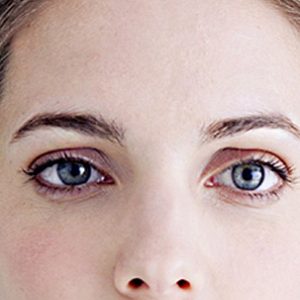



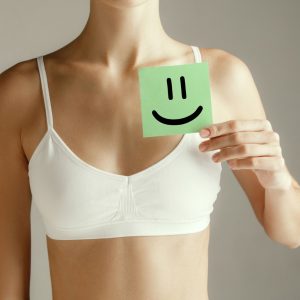


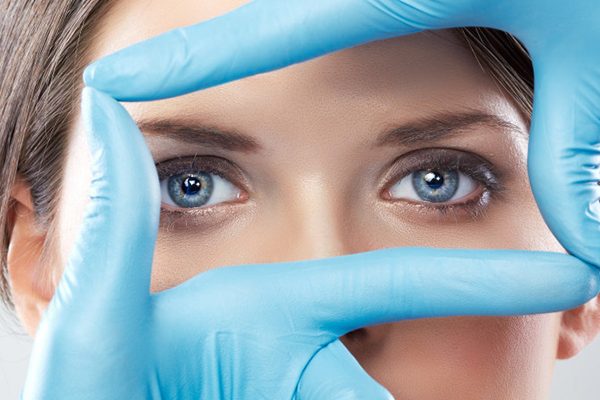

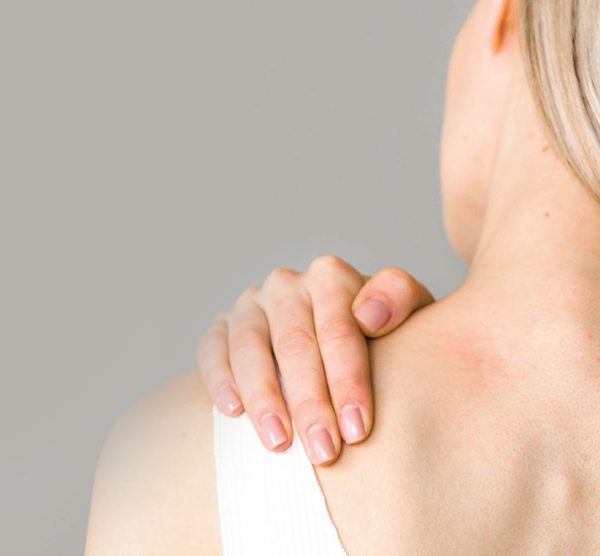

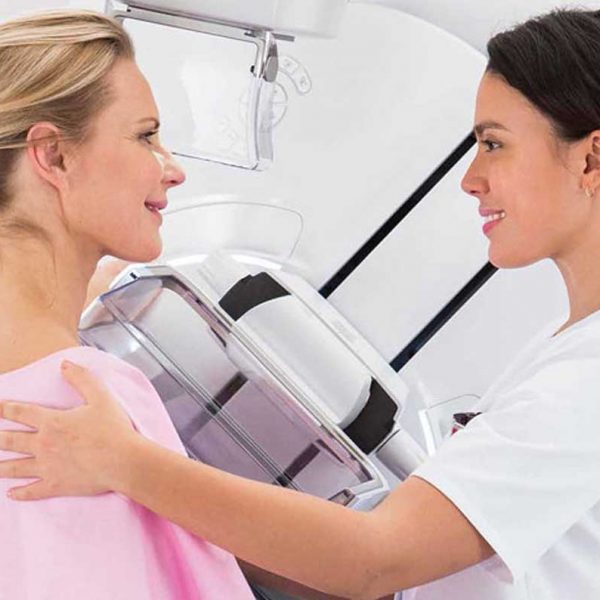




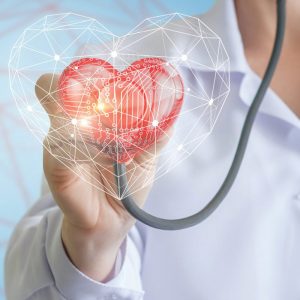


Reviews
There are no reviews yet.